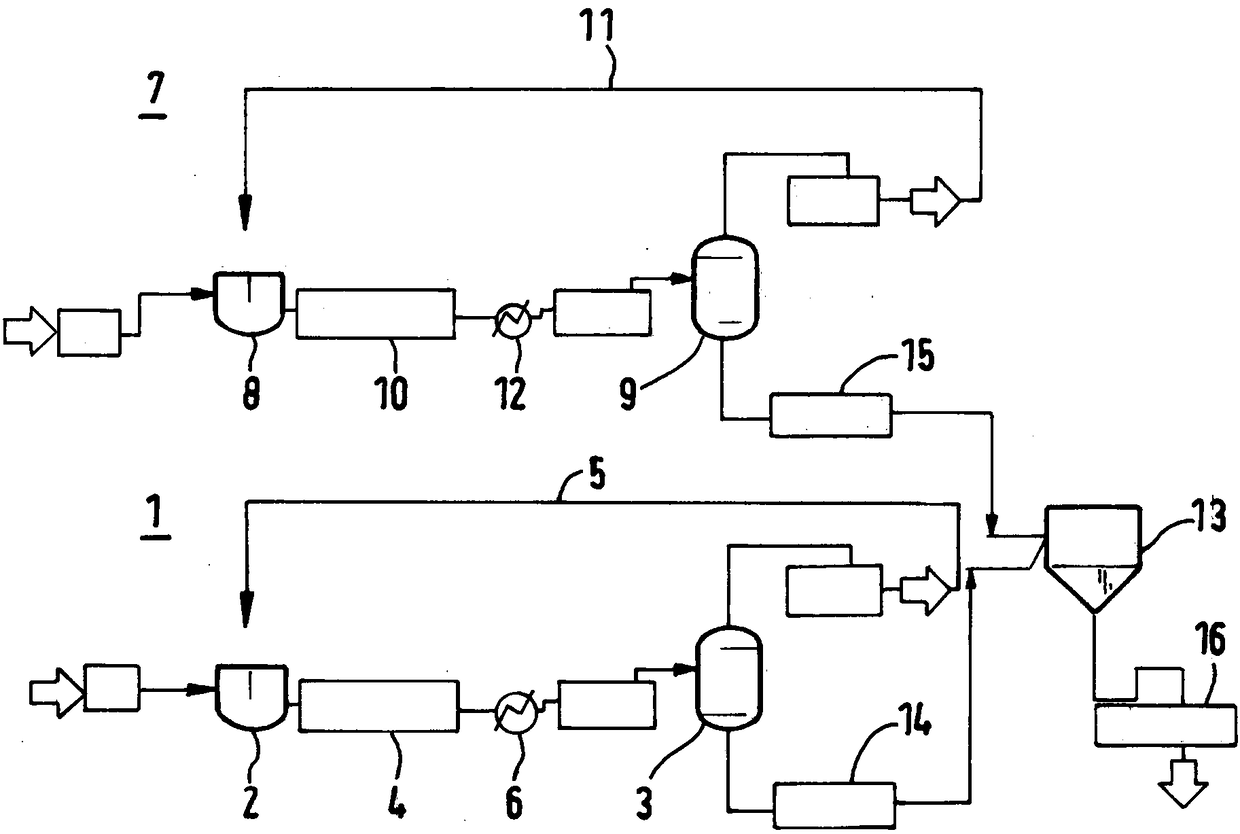In-line blending process
A technology of blending and copolymer, applied in separation methods, chemical instruments and methods, evaporator regulation/control, etc., can solve problems such as low polymer concentration
- Summary
- Abstract
- Description
- Claims
- Application Information
AI Technical Summary
Problems solved by technology
Method used
Image
Examples
Embodiment
[0158] Computer simulations were performed using Aspen 8.8 computer software. In this simulation, the solution taken from the reaction stage in Example E1 containing 21.2 wt % of a copolymer of ethylene and 1-octene, 0.9 wt% unreacted ethylene monomer and 77.9 wt% n-hexane solvent and unreacted 1-octene comonomer. From this, the temperature of the solution stream is assumed to be 220°C before entering the flash separator, the pressure is assumed to be 90 bar before entering the flash separator, and 9 bar in the flash separator. In Comparative Example CE2, the separation was performed in a liquid-liquid separator. From this, it is assumed that the temperature of the solution stream before entering the liquid-liquid separator is 220°C, and the pressure in the liquid-liquid separator is assumed to be 30-45 bar. A comparison of process flows is shown in Table 1.
[0159] Table 1
[0160]
[0161] By comparison, it can be seen that flash separation is more efficient t...
PUM
 Login to View More
Login to View More Abstract
Description
Claims
Application Information
 Login to View More
Login to View More - R&D
- Intellectual Property
- Life Sciences
- Materials
- Tech Scout
- Unparalleled Data Quality
- Higher Quality Content
- 60% Fewer Hallucinations
Browse by: Latest US Patents, China's latest patents, Technical Efficacy Thesaurus, Application Domain, Technology Topic, Popular Technical Reports.
© 2025 PatSnap. All rights reserved.Legal|Privacy policy|Modern Slavery Act Transparency Statement|Sitemap|About US| Contact US: help@patsnap.com

